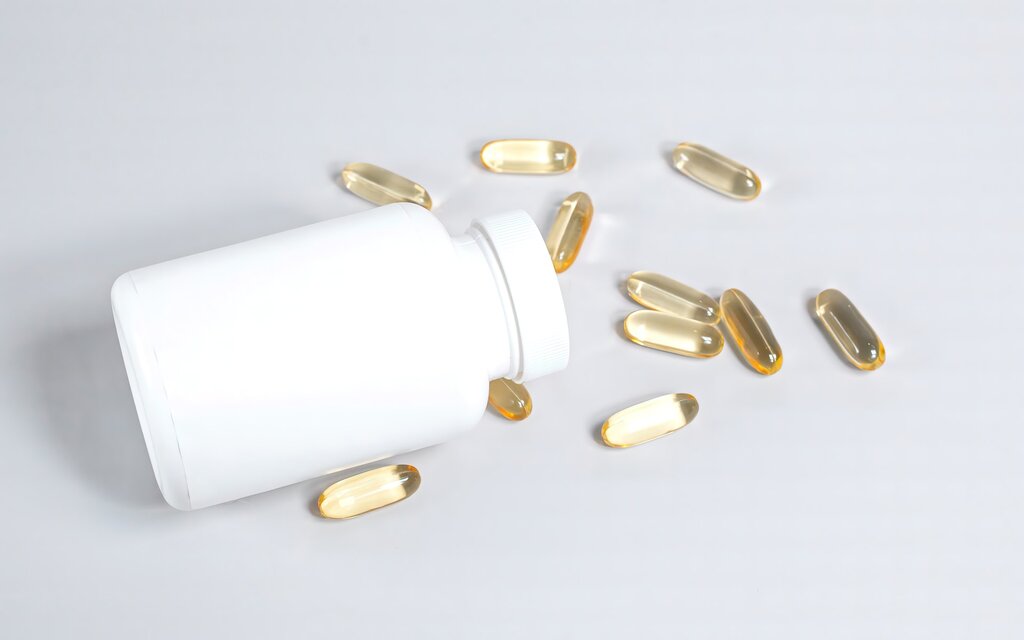How Much Omega-3 Must Individuals Take Each Day?

Like most people, you need to know how much omega-3 per day you should take. And yet, omega-3 is one of the essential nutrients for our health. There are many opinions about how much omega-3 we need, and the amount may vary depending on our individual needs.
But in general, experts recommend that we take between 250 and 500 mg daily. Why is omega-3 so essential, then? How can you ensure that you are receiving enough? Find out by reading on.
The Benefits of Omega-3
Fish and some plant sources include a crucial fatty acid called omega-3s. They are considered "essential" because our bodies cannot produce them independently, so we must get them from our diet.
There are many different omega-3s, but eicosapentaenoic acid (EPA) and docosahexaenoic acid (DHA) are the most important for human health. EPA and DHA have been linked with a variety of health benefits, including:
- Reduced inflammation
- Lower blood pressure
- Reduced risk of heart disease and stroke
- Improved cognitive function
- Reduced risk of age-related macular degeneration (AMD)
While you can get omega-3s from plant sources like flaxseeds and chia seeds, the amounts of EPA and DHA are meager. The best way to get adequate amounts of EPA and DHA is by eating fish or taking a fish oil supplement.
How Much Omega-3 Should You Take?
Omega-3 fatty acids are essential for many aspects of health, including reducing inflammation and supporting cognitive function. The recommended daily intake of omega-3s is 250–500 mg per day.
Omega-3 fatty acids come in three primary categories: eicosapentaenoic acid (EPA), docosahexaenoic acid (DHA), and alpha-linolenic acid (ALA). Fish and shellfish have EPA and DHA, but flaxseed and other plant oils contain ALA.
The best way to get omega-3s is through diet, especially by eating fatty fish such as salmon, mackerel, herring, and trout. However, some individuals need help to obtain enough omega-3s from diet alone and might require supplementation.
If you decide to take an omega-3 supplement, it's essential to choose one that has been purified and is free of contaminants such as mercury. It's also necessary to take supplements with the correct ratio of EPA to DHA. A good balance is 2:1 or 1:1.
The Various Omega-3 Forms
Omega-3 fatty acids come in three primary categories:
- Alpha-linolenic acid (ALA): This omega-3 fatty acid is the most prevalent and can be found in plant oils like flaxseed and canola oil.
- Eicosapentaenoic acid (EPA): This type of omega-3 fatty acid is found in fatty fish, such as salmon, mackerel, and herring.
- Docosahexaenoic acid (DHA): This omega-3 fatty acid is also found in fatty fish, algae, and other marine sources.
Omega-3 Foods
Numerous foods contain high levels of omega-3 fatty acids. Some examples include fatty fish such as salmon, mackerel, herring, and sardines. Other seafood high in omega-3s include oysters, anchovies, and shrimp.
Many plant sources of omega-3s exist as well. Flaxseeds, chia seeds, chia seed oil, canola oil, soybean oil, pumpkin seeds, walnuts, and leafy greens such as spinach and kale are all excellent sources of omega-3s.
For those who don't eat fish or seafood, a daily supplement containing omega-3 fatty acids is recommended. The American Heart Association (AHA) suggests eating fish at least twice per week for those with heart disease. The AHA recommends eating one serving of fish per week for those without heart disease.
Omega-3 Supplements
If you are considering taking an omega-3 supplement, it is essential to know how much omega-3 you should take per day. The omega-3 you need depends on age, health, and lifestyle factors.
Omega-3 supplements are available in various forms, including capsules, tablets, liquids, and powders. The type of supplement you choose will also affect the omega-3 you should take daily.
For example, the recommended dose for people who want to lower their triglyceride levels is 2 grams (2000 mg) of EPA and DHA daily. Taking a fish oil supplement that provides 1000 mg of EPA and DHA per capsule would equate to taking two daily pills.
It is also important to note that not all omega-3 supplements are created equal. Some products on the market only contain one or two of the primary omega-3 fatty acids (EPA and DHA), while others contain all three (ALA, EPA, and DHA).
When choosing an omega-3 supplement, read the label carefully to determine how much of each fatty acid is present. This will help you determine the proper dosage for your needs.
Conclusion
There are many omega-3 supplements on the market, and it can be unclear how much you should take. The ideal dose of omega-3 depends on your individual needs, but a good rule of thumb is to take 1,000 mg daily.
Consult your doctor about the proper dosage if you plan to become pregnant or breastfeed since you may require additional omega-3. Remember to consult your doctor before beginning any new supplement program.
